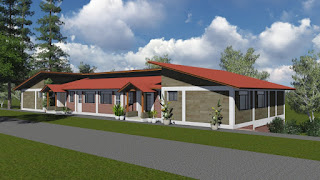by Carlan
One of the first things to strike me about the life of a missionary ER doctor was just how many hats one has to (gets to?) wear. In addition to the typical set of responsibilities, renovating a closet to become an ER, training staff on some key aspects of emergency care, teaching med students, and investing in the spiritual maturation of those same folks, my first year in Burundi had me scrambling to learn about international labor laws, graphic design, tree husbandry, the nutrition provided by various staple crops, and IT network management. In this last year or so, I have gotten to learn about publishing a Kirundi translation of a Bible study, managing a non-profit board, coordinating a multi-center research protocol, concrete crush pressures, architectural project management, international conference planning, plumbing codes, cabinet construction, the Alexandrian (allegorical) hermeneutical tradition, African Christologies, and, best of all, fatherhood.
Most days, it feels like what I do has relatively little to do with the training I received in med school and residency. I am extremely grateful for the support of my residency program, LAC+USC Emergency Medicine, for allowing me to pick up shifts when I come back on furlough and I will never forget my time at Verdugo Hills Hospital as a (sometimes) solo practitioner. I love getting to practice my speciality. Yet this chance to reinvent myself every year is one of the hardest, best things about life in Burundi. Each day is an opportunity to become more like the person I want to be: creative, helpful, encouraging. The risk of intellectual stagnation is pretty low for most missionary doctors...at least all the ones I know.
Having all these opportunities to learn and grow comes with a potential pitfall as well: distraction unto dissipation. My mom told me when I was young, “If you can do one thing in this life with excellence, you’ll be doing better than most.” I resolved that day that I would be excellent at something before I died...not so much out of vainglory but because aspirations ought to be towards excellence. That pathway was laid out in relatively simple terms throughout my pre-deployment life: study hard, learn the material set before you, and demonstrate your competence every time a test presents itself. That is, after all, the only way to get to and through medical training. Yet even during residency, the breadth of possibility was challenging my notion of excellence.
Emergency medicine as a field is wider than many and as deep as any. One somewhat snarky professor used to say that an ER doctor needs to know 20% of what a cardiologist knows, 30% of what a trauma surgeon knows, 15% of what an ENT knows, 25% of what a pediatrician knows, 10% of what an internist knows, 15% of what a radiologist knows, 25% of what an toxicologist knows, etc., etc. If you add it all up, we are supposed to know 300% of what one can know and to access it within 10 seconds of needing it, all while resuscitating a crashing patient. Even if he overestimated our abilities, something in that statement rings true. I would only add that for missionaries you need to multiply it by a factor of 10.
So how does a missionary ER doctor decide where to focus his (admittedly short-lived) attention?
In 2020, I want to do less. Pardon my grammar, I want to do fewer [things]. My grandpa used to say, “Life is just a series of decisions made based on priorities.” So this year, my resolutions are only three:
- to tell & show Jesus every day that I love him
- to take Michelle on (at least) two dates without distractions (aka, sans child)
- to take (at least) one photo with our daughter that is so epic/fun/beautiful that she’ll ask me about it when she is older
























































